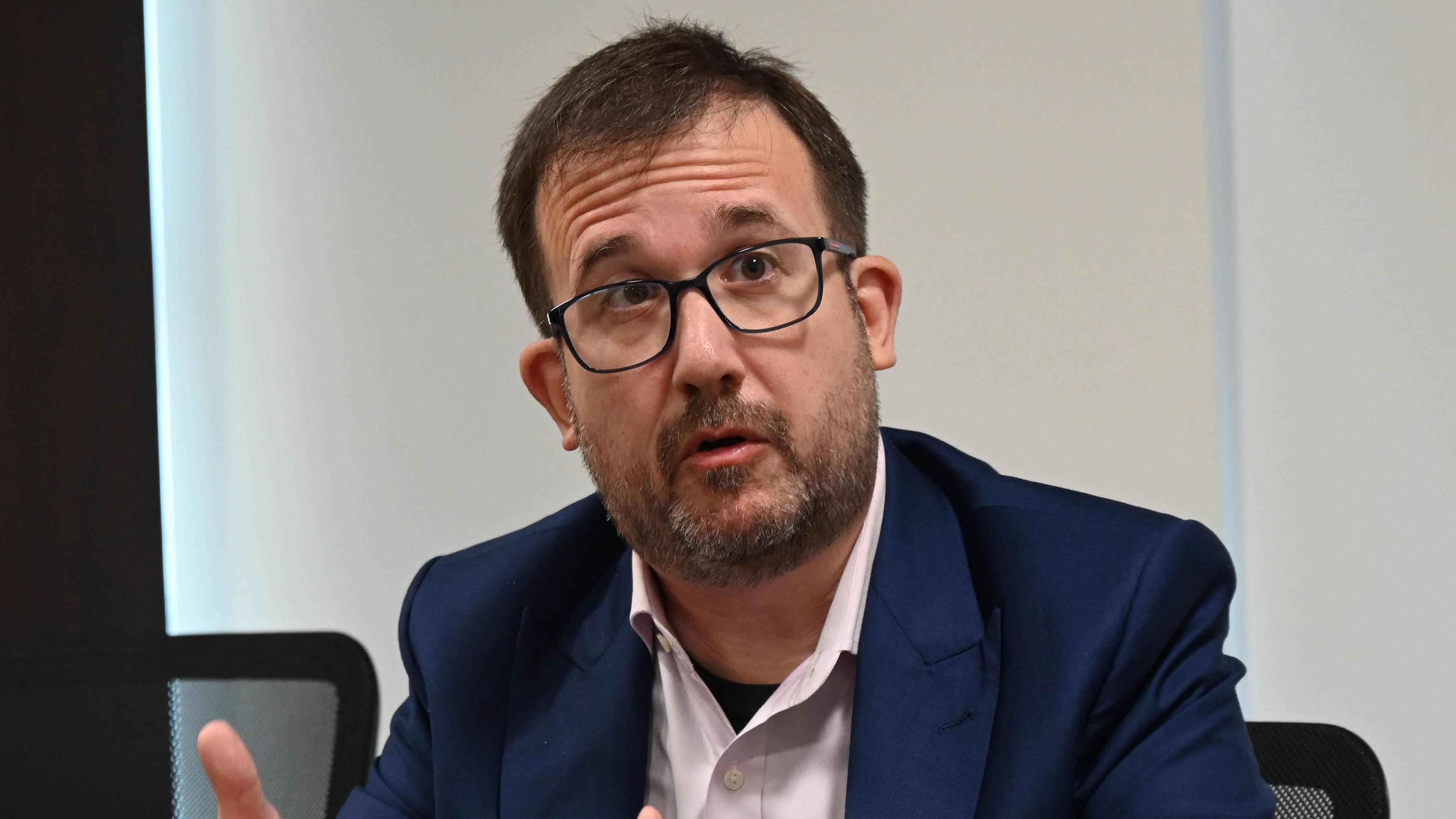
US Consul General, Chennai, Christopher Hodges gestures during his visit to Bengaluru on Monday.
Credit: DH Photo by B K Janardhan
Bengaluru: Christopher Hodges, US Consul General, Chennai, sees students as crucial to the future of India-US ties as the two countries prepare to leverage talent in areas including critical and emerging technology.
Hodges is in Bengaluru where a delegation comprising the representatives of 18 American universities kicked off a series of post-graduate student fairs across five south Indian cities, over nine days.
He spoke with R Krishnakumar about industry-enabled academic partnerships, talent in tier-2 cities, and other aspects that make the collaborations important.
How are the US and India positioned to build on the impetus to the bilateral ties?
The US-India relationship has never been better, not just within the bilateral context but in how we are impacting the region through mechanisms like the QUAD, promoting an open, free, and secure Indo-Pacific, and how we are trying to address global economic challenges and climate change. We have a lot of momentum to take advantage of. The bilateral conversations between President Biden and Prime Minister Modi are, obviously, very important. Several programmes were launched through those conversations, including the initiative on Critical and Emerging Technology (iCET) in 2022. But one of the secrets of the sustainability of this relationship is that it is about much more than what happens between New Delhi and Washington.
This is about building partnerships outside of government-level interactions.
Take the Isro-NASA collaboration, for instance (NISAR, the earth observation mission developed by the two space agencies, is tentatively set for a 2024 launch). This is a government-to-government endeavour but it is also pulling in the private sector business on both sides, like startups and SMEs that are looking at ways to innovate. To harness the opportunities this space cooperation has to offer, you need everyone at the table. We are looking at education in the same vein.
How integral is higher education to these plans for enhanced multi-sector collaboration?
The number of Indian students in the US – at the graduate level, there were 166,000 last year – is more than from any other country. How do we take this forward? We are looking at cooperation in critical and emerging technology, quantum, commercial space, AI, green hydrogen, and renewables. It will be these students, these universities, and partnerships that include businesses, American and Indian, that will take us to the next level, through research, innovation, and partnerships that leverage talent on both sides. The roadmap is built around the fundamental realisation that our countries are much more than what happens in their capital cities.
What is on the agenda of the delegation of US universities?
We are starting a programme for 18 US universities to look at attracting top-grade Indian graduate students, forming partnerships with Indian universities and businesses, and fostering R&D. This is the kind of thing that will be essential for iCET to succeed. The goal is to foster new advances in these next-generation areas that allow us to build secure and sustainable supply chains, create jobs, and put our resources together to solve regional and global problems. In practice, this requires an Indian university to come together with a US university and, maybe, a US business.
Our focus is on making sure that industry and business are represented in all these partnership conversations. Even outside of this delegation, we have been constantly engaging with businesses in Bengaluru. It is about building connections and an ecosystem with the right regulations and standards. That is why we are starting in Bengaluru which is India’s startup capital.
What are the disciplines that you expect to drive these institutional partnerships?
These US universities are all research-driven, with a lot of work focused on applied science and next-generation technology. There is talent, and there are resources directed toward AI, quantum, and renewables but there is diversity too. So you will also have those business graduates who will be able to engage with the industry. There are also outstanding Indian students, doctoral candidates, and researchers in the US who can bring real dividends to both countries. How do we get them into this mix? That is another critical angle we will have to explore.
The 18 US universities capture the talent and diversity of the American system. We are exploring other cities (Manipal, Mangaluru, Kochi, and Coimbatore), under the realisation that there is a lot of talent that does not always get captured when the focus is on the capital cities.
The NEP 2020 now allows foreign universities to set up branch campuses in India. Are the US universities interested?
I can't speak for the universities but I’ll say that the scope and variety of collaboration between American universities and the Indian partners have dramatically expanded, in the form of student flow, institutional partnerships, joint degrees, and faculty exchanges. Let us see where this goes. The important thing is to provide diversity in opportunities.
The recent attacks on Indians studying abroad, including in the US, have revived discussions around student safety.
I know that one of those incidents happened in Georgia. I’m from Georgia and that makes it particularly heartbreaking. Every American university is committed to the safety and security of its students. As a father, and as a human being, I see these as human tragedies, wherever they happen.
Has any progress been made on the long-discussed US Consulate in Bengaluru?
There are certainly a lot of things in Bengaluru that form important dimensions in the US-India relationship, including the 650 US businesses here – there is plenty to do here and we are exploring the process of how that consulate can be established.